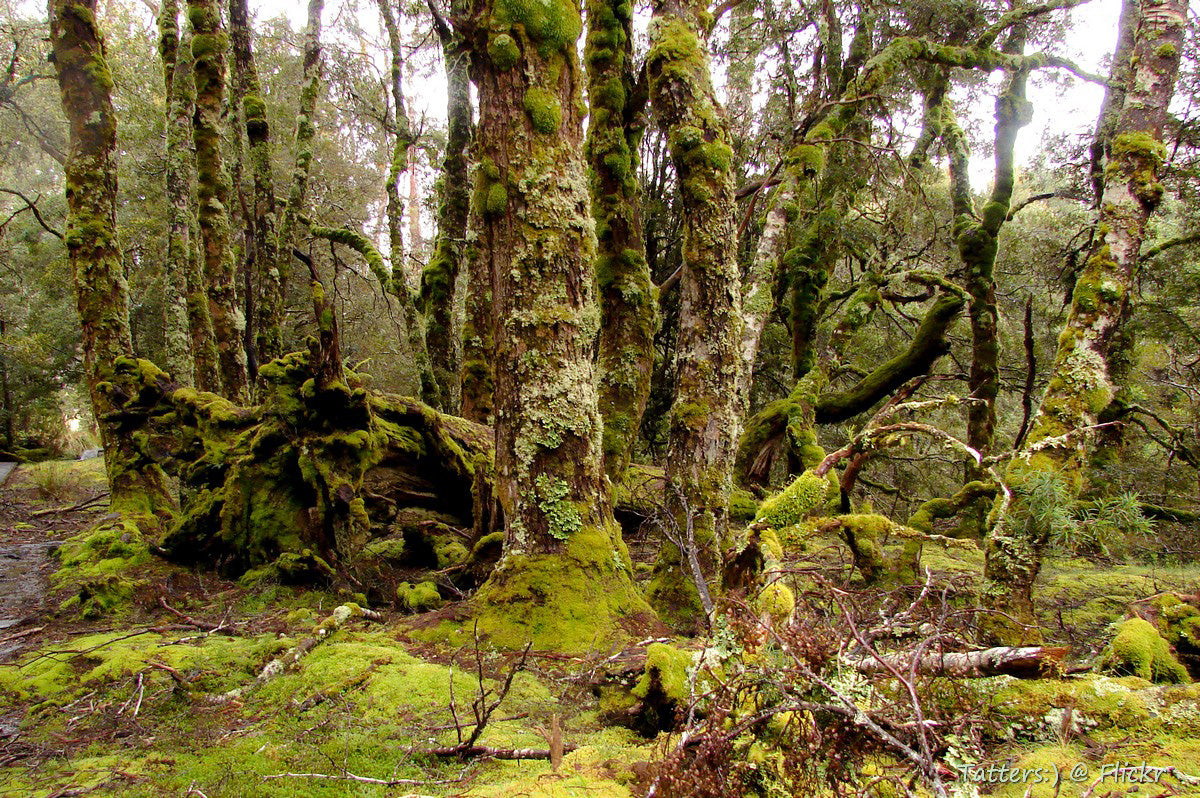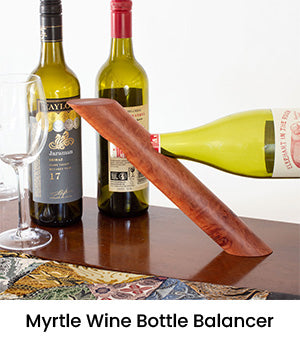Tasmanian Myrtle, our link to Gondwana

The Tasmanian Myrtle, scientifically known as Nothofagus cunninghamii, stands as a dominant species in the cool temperate rainforests of Tasmania and southern Victoria. This tree, with its deep green foliage and rough, moss-covered bark, is not only a significant ecological player but also a symbol of the ancient landscapes it inhabits. Its role extends beyond the ecological, touching cultural and economic spheres through its uses in furniture, construction, and as an ornamental plant.
Taxonomy and Nomenclature
Tasmanian Myrtle is part of the Nothofagaceae family, a group of plants that have a long history dating back to the times of Gondwana. The genus name, Nothofagus, translates to "false beech," pointing to its similarities and differences with the northern hemisphere's beech trees. This tree has undergone various nomenclatural changes, reflecting the evolving understanding of its relationships within the plant kingdom. Named in honour of the botanist Allan Cunningham, its study and classification have been pivotal in understanding Australia's botanical diversity.
Ecology
In the cool temperate rainforests where Tasmanian Myrtle thrives, it plays a critical ecological role. This tree species contributes significantly to the forest's structure, offering habitat and food for various wildlife. Its ecological adaptations are fascinating, with a remarkable ability to regenerate after fire, though it exhibits low fire resistance. This duality highlights the tree's resilience and its vulnerability to changes in its environment, particularly those related to fire frequency and intensity.
Distribution
The Tasmanian Myrtle is predominantly found in Tasmania and parts of southern Victoria. Its distribution is influenced by environmental factors, allowing it to adopt forms ranging from towering trees in sheltered valleys to stunted shrubs in exposed alpine regions. The largest tracts of Tasmanian Myrtle-dominated rainforest are invaluable for their biodiversity and as a window into the ecological processes of these ancient landscapes.
Physical Characteristics
The Tasmanian Myrtle, or Nothofagus cunninghamii, showcases a variety of physical features that not only contribute to its beauty but also its resilience in the wild. Its leaves are small, triangular, and dark green, with a distinctive toothed margin that becomes more pronounced in the new growth, which exhibits a range of colours from red to pink or orange in spring. The bark is rough and often covered with mosses, lending a textured appearance to the tree. Flowers of the Tasmanian Myrtle are unisexual, with male and female flowers appearing on the same tree. The fruit, small and nut-like, carries seeds that are dispersed in the summer months, playing a crucial role in the species' reproduction and survival.
Conservation Status
While the Tasmanian Myrtle is not currently listed as endangered, its status as 'near threatened' in certain areas warrants attention. The primary threats to its existence include habitat destruction, changes in fire regimes, and the potential spread of diseases like myrtle wilt. Conservation efforts are focused on protecting its natural habitat, understanding its ecological role more deeply, and ensuring that its populations can thrive for future generations to enjoy and benefit from.
Uses
The uses of Tasmanian Myrtle are as varied as they are significant. Historically and contemporarily, the wood of Nothofagus cunninghamii is highly valued for its beauty, durability, and workability. It finds application in fine furniture, flooring, and interior panelling, where its reddish-pink to reddish-brown timber is much sought after. Beyond its economic value, the Tasmanian Myrtle also plays a role in landscaping and horticulture as an ornamental tree, prized for its aesthetic appeal and its ability to adapt to a range of environmental conditions.
Right here at Australian Woodwork, we're excited to showcase a variety of products crafted from Tasmanian Myrtle, each highlighting the wood's natural beauty, durability, and versatility. From the elegance of our Wine Bottle Coaster, which not only adds a touch of class to your dining experience but also protects your surfaces from spills to the practical charm of our French Style Rolling Pins, perfect for those who love baking and appreciate the finesse of a quality kitchen tool.
We're particularly proud of our Cremation Ashes Box, a piece that combines thoughtfulness with the distinguished look of Tiger Myrtle. It's designed for those moments that matter most, offering a dignified way to cherish memories of loved ones. And for a bit of magic in your living room, our Myrtle Wood Wine Bottle Balancer is a conversation starter, elegantly displaying your favourite wine while defying gravity.
Each of these items not only serves a practical purpose but also brings the unique character of Tasmanian Myrtle into your home, proving that this remarkable wood can blend functionality with aesthetic appeal seamlessly.
Propagation and Cultivation
Cultivating Tasmanian Myrtle involves understanding its needs and meeting them as closely as possible outside its natural habitat. The tree grows best in moist, well-draining soil and partial sun, though it can tolerate a range of conditions from full sun to full shade. Propagation is typically achieved through seeds, which require stratification to germinate successfully. However, cuttings can also be used, albeit with a higher risk of disease. Cultivators need to be mindful of the risk of myrtle wilt, a disease that can be fatal to the trees, especially when propagated through cuttings.
Conclusion
The Tasmanian Myrtle (Nothofagus cunninghamii) is more than just a tree; it's a cornerstone of the cool temperate rainforests of Tasmania and southern Victoria. Its ecological significance, coupled with its aesthetic and economic value, underscores the need for concerted conservation efforts. Understanding this species' ecology, distribution, and uses provides us with a glimpse into the complexity of natural systems and the interdependence of life.










